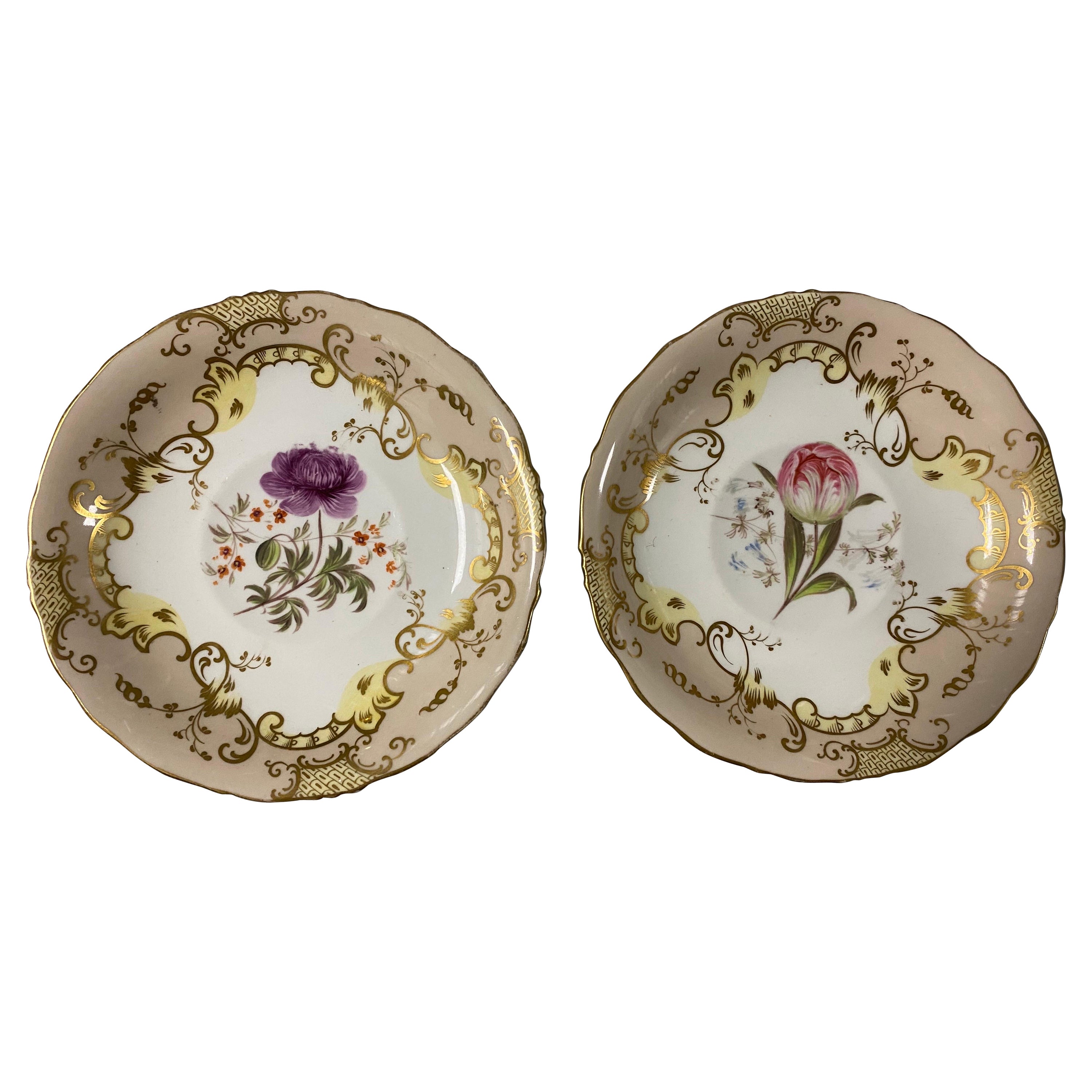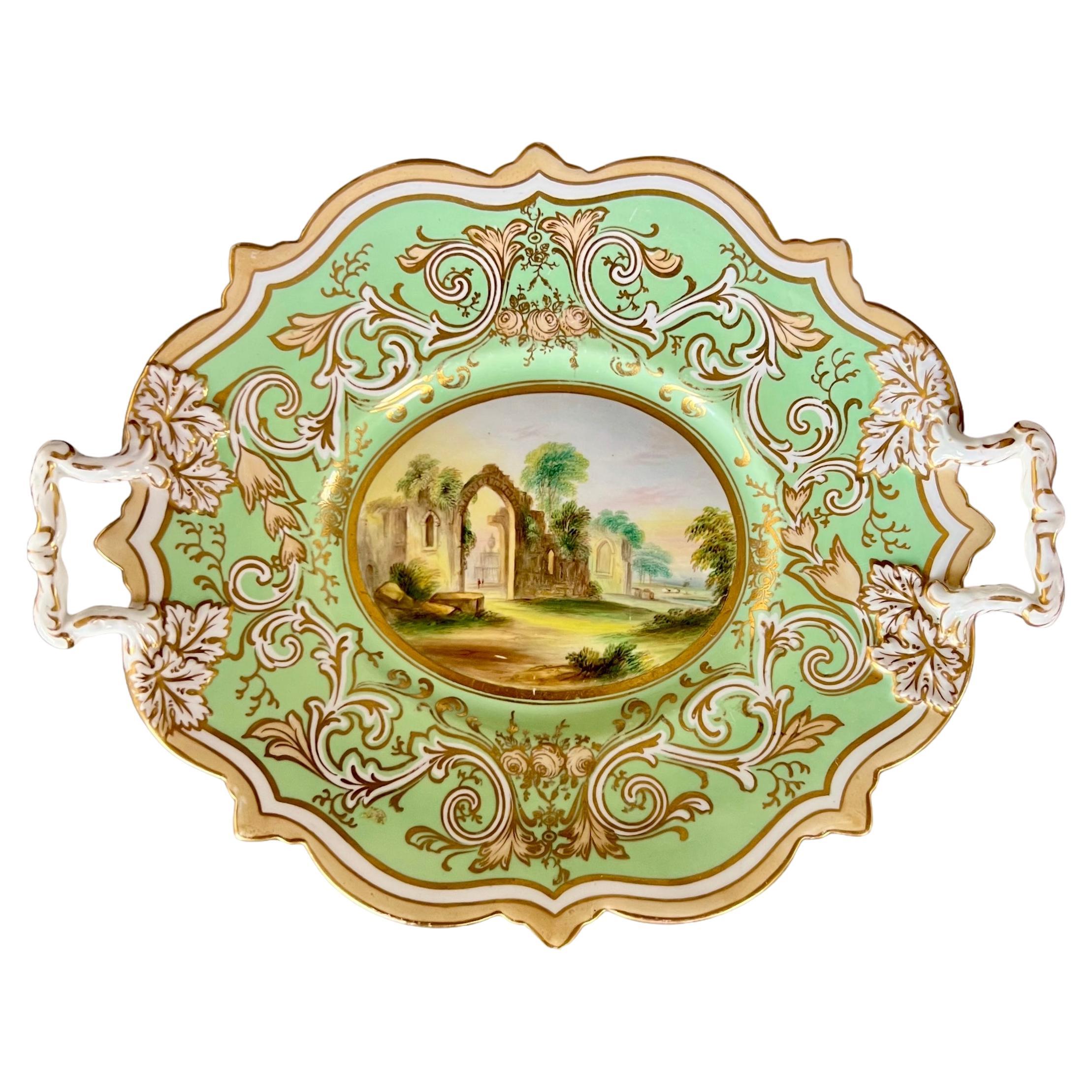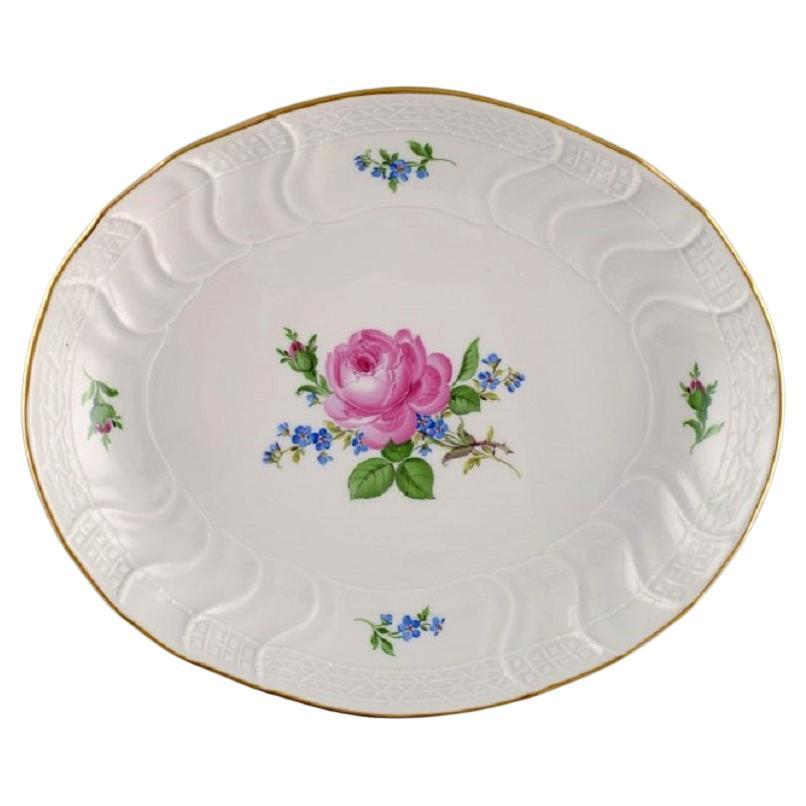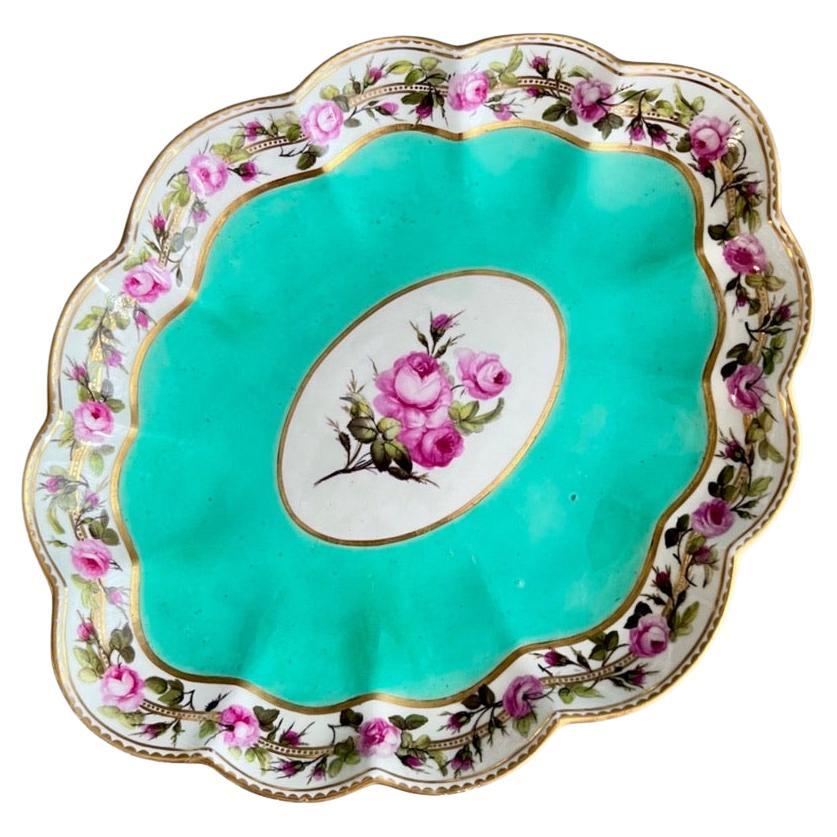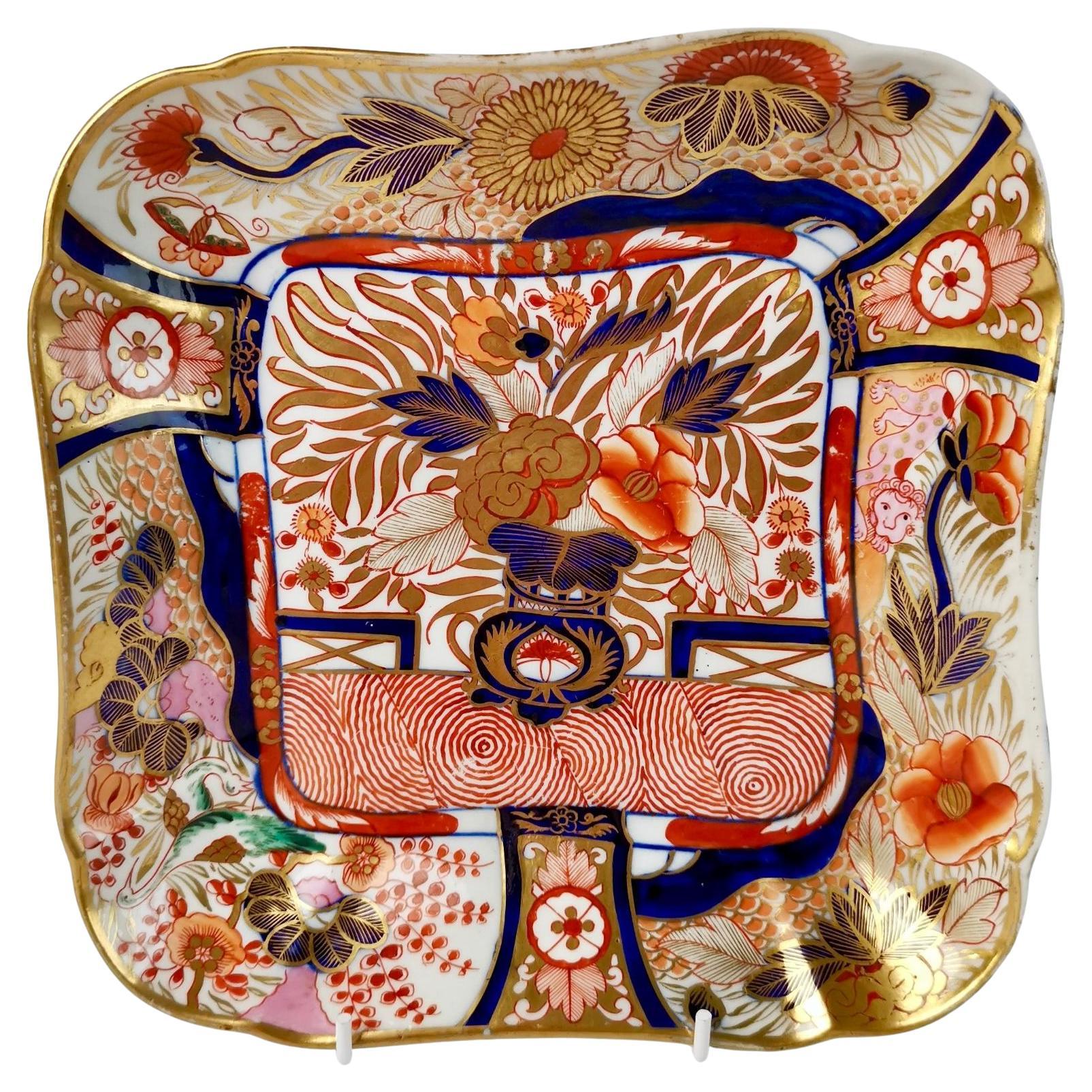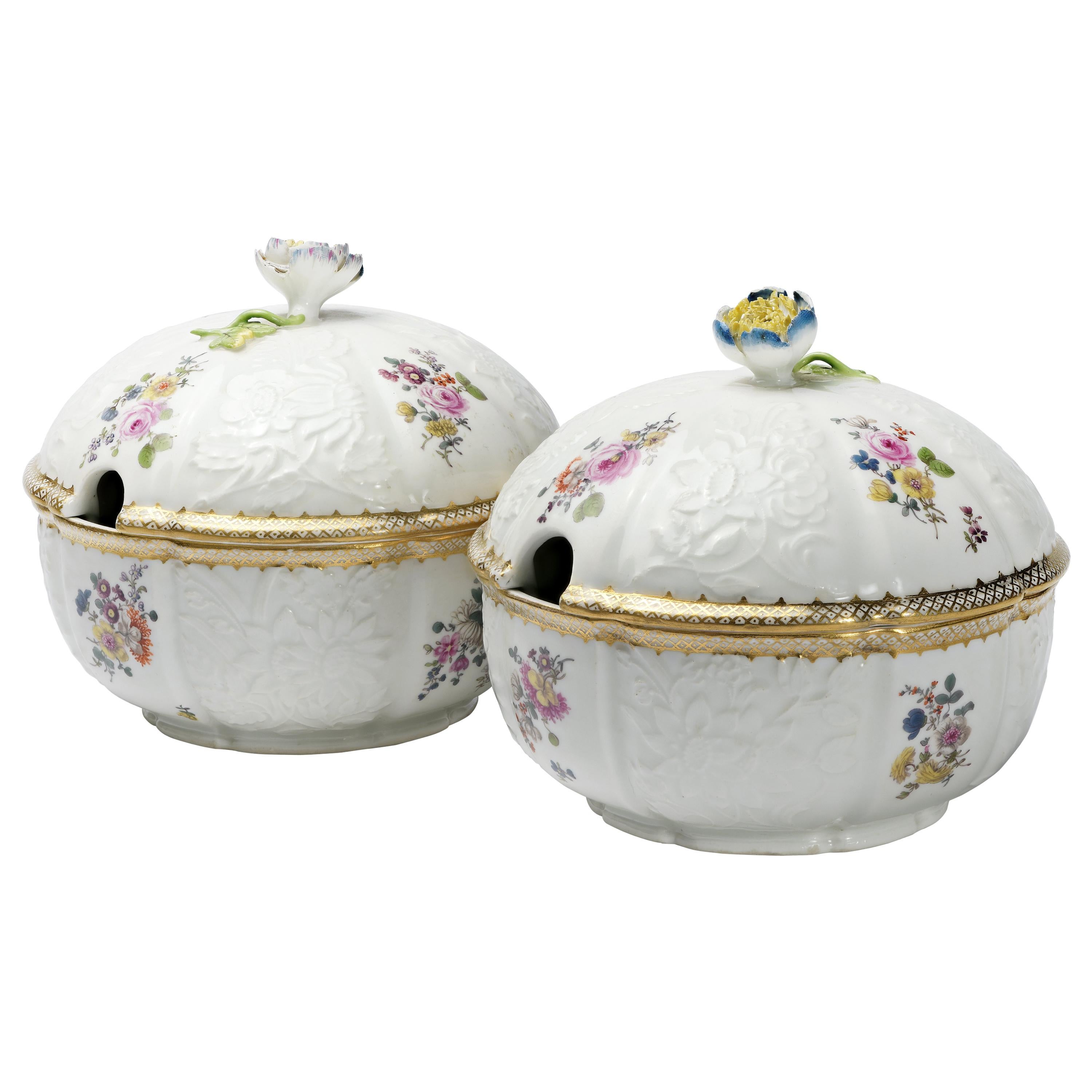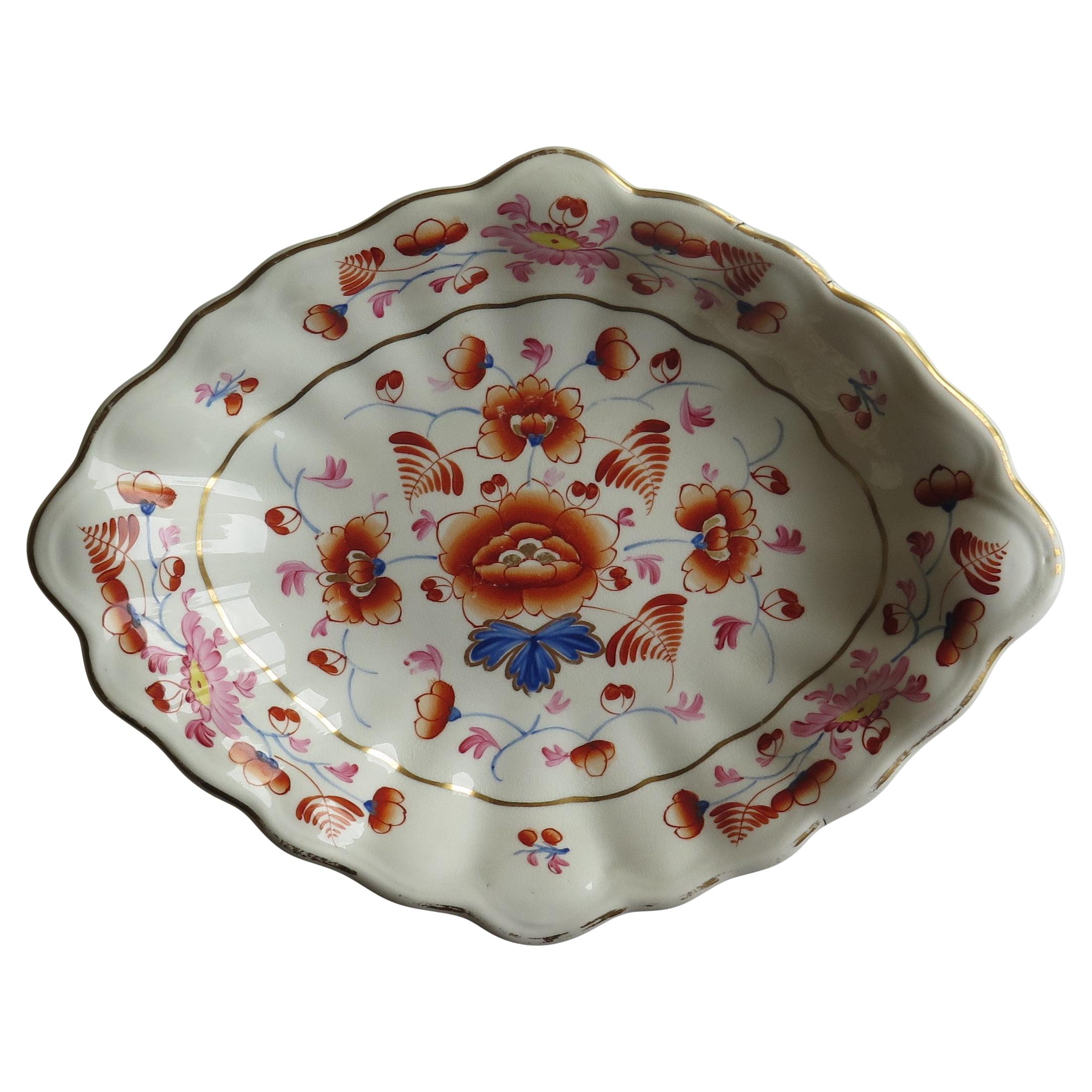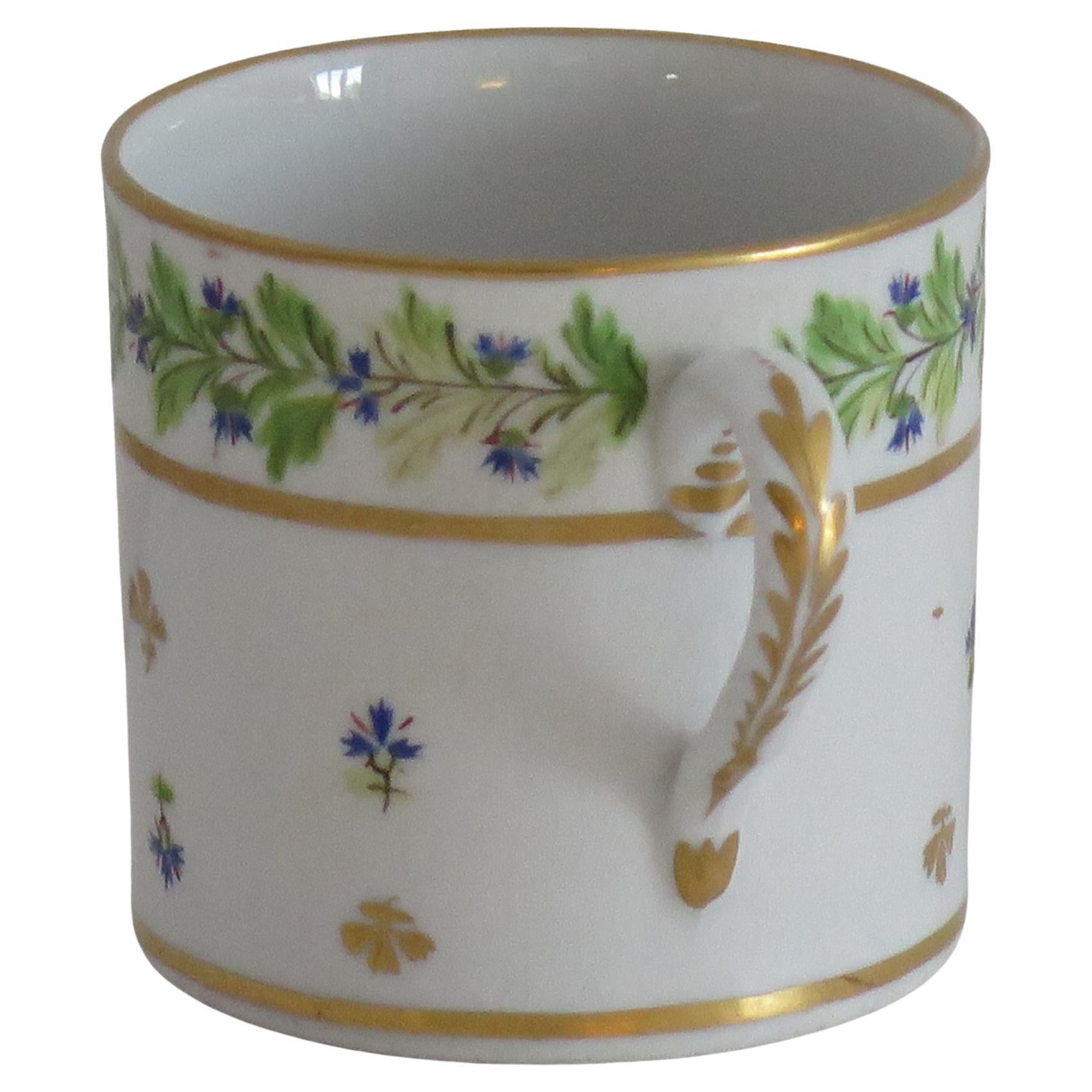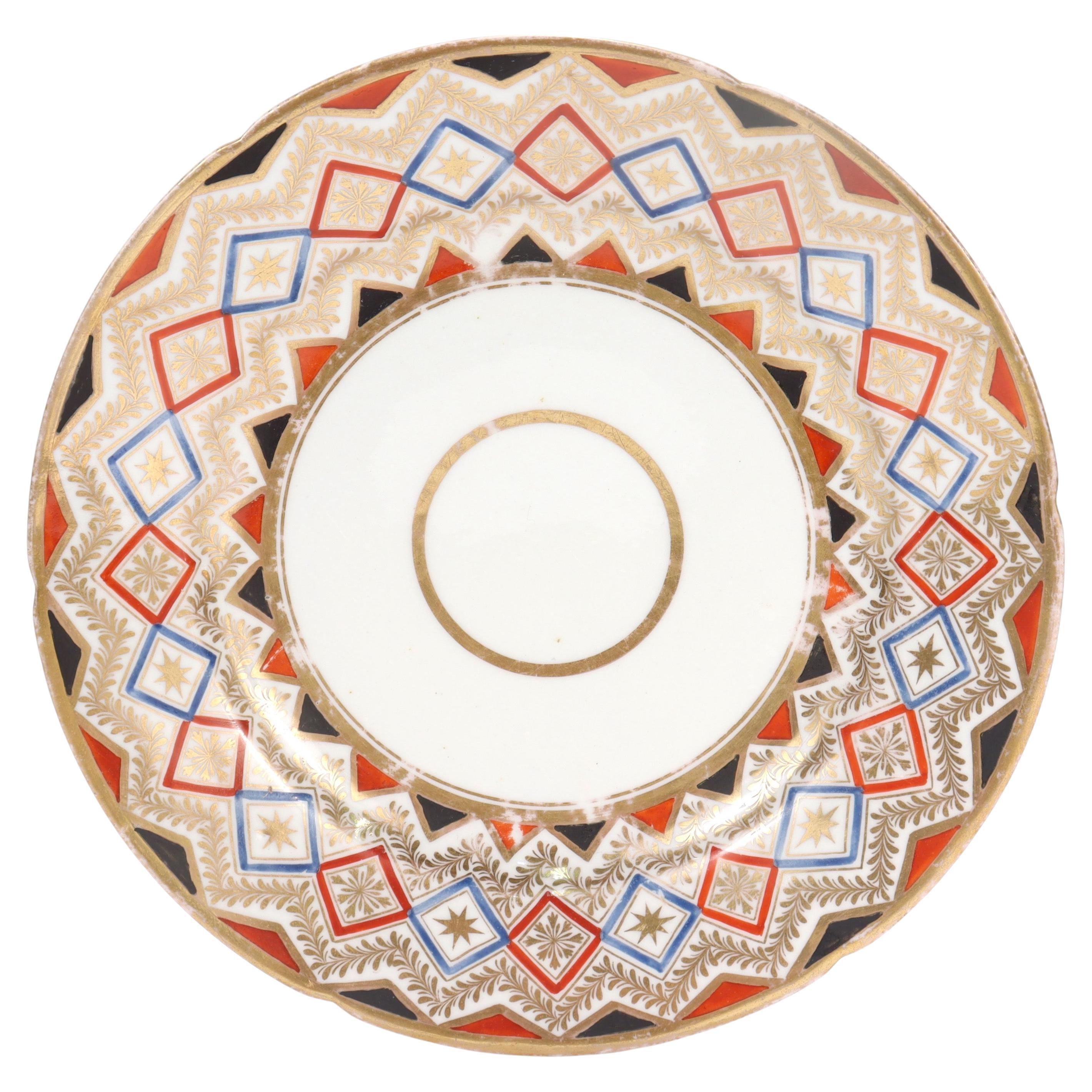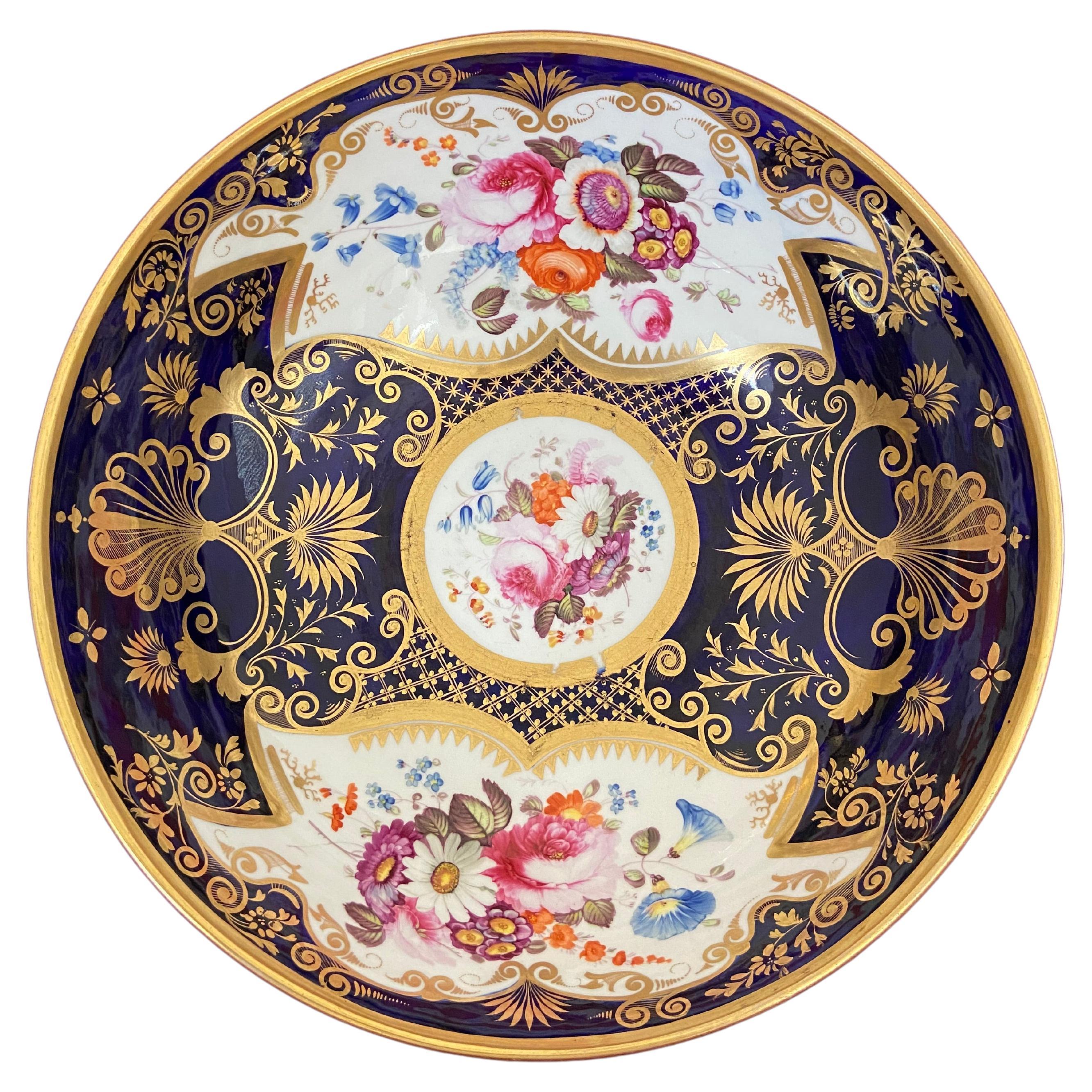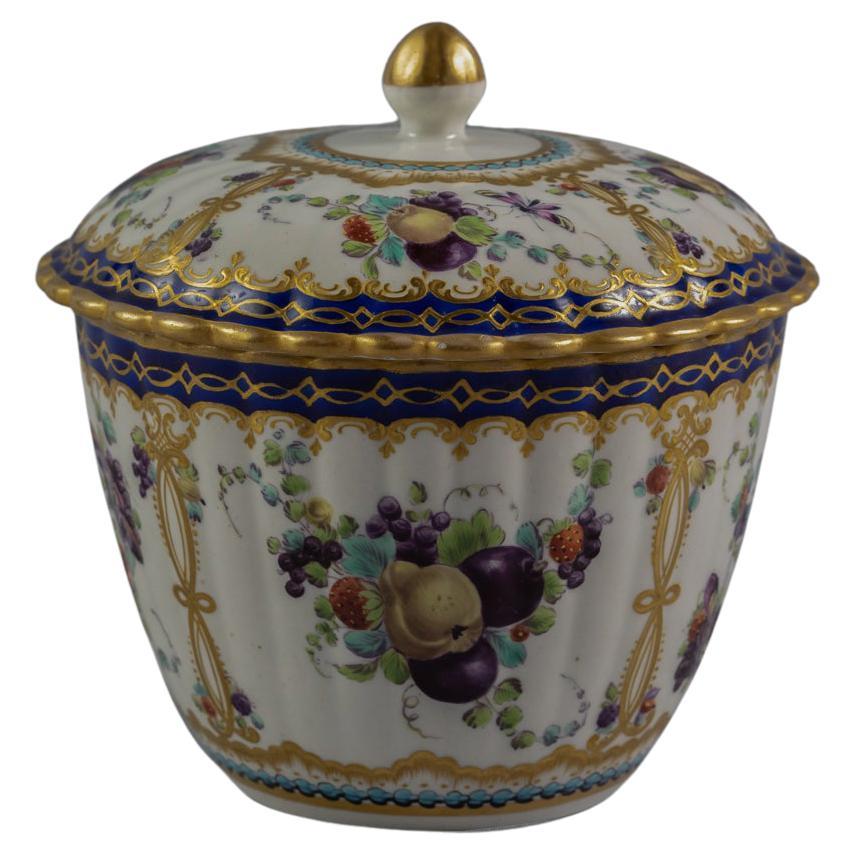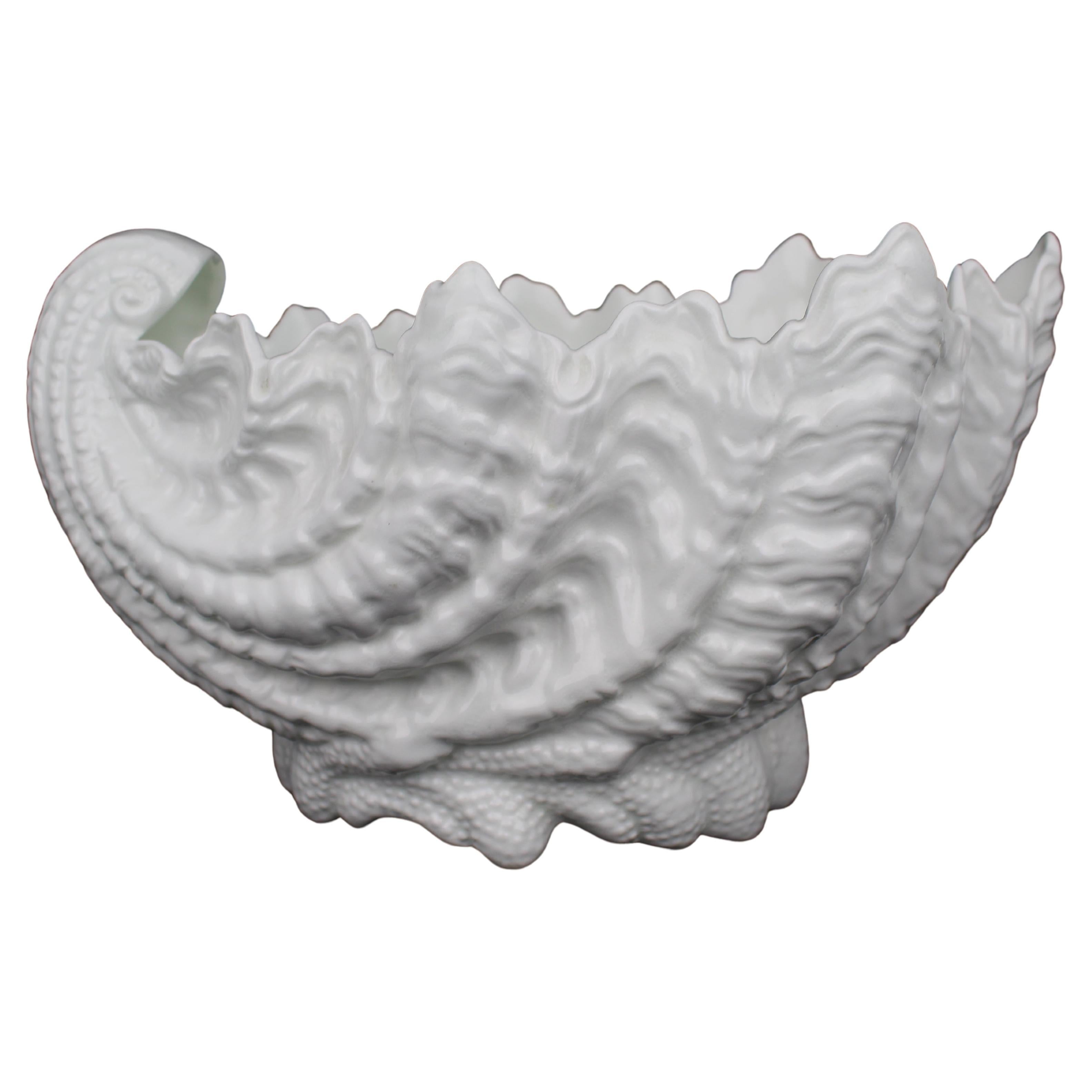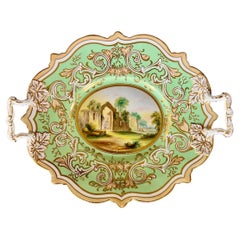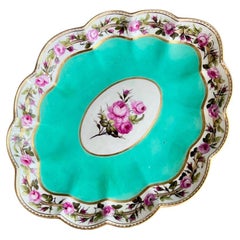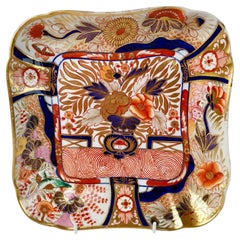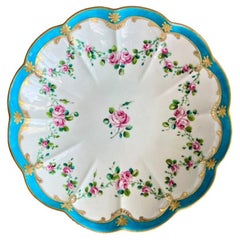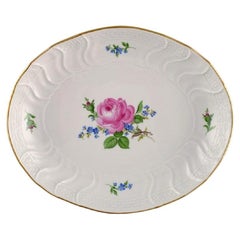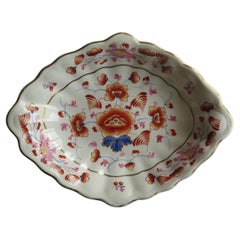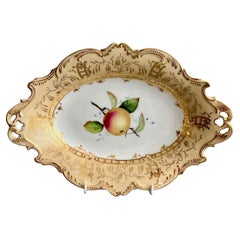
Coalport Porcelain Oval Dish, Beige with Apple by Joseph Birbeck, circa 1847
View Similar Items
Want more images or videos?
Request additional images or videos from the seller
1 of 12
Coalport Porcelain Oval Dish, Beige with Apple by Joseph Birbeck, circa 1847
$595List Price
About the Item
- Creator:Coalport Porcelain (Maker)
- Dimensions:Height: 2.25 in (5.72 cm)Width: 11.75 in (29.85 cm)Depth: 8.25 in (20.96 cm)
- Style:Victorian (Of the Period)
- Materials and Techniques:
- Place of Origin:
- Period:
- Date of Manufacture:circa 1847
- Condition:Wear consistent with age and use. In perfect antique condition without any damage, crazing or repairs or even rubbing.
- Seller Location:London, GB
- Reference Number:Seller: A-COA2831stDibs: LU4805134468482
About the Seller
5.0
Gold Seller
Premium sellers maintaining a 4.3+ rating and 24-hour response times
Established in 2016
1stDibs seller since 2019
225 sales on 1stDibs
Authenticity Guarantee
In the unlikely event there’s an issue with an item’s authenticity, contact us within 1 year for a full refund. DetailsMoney-Back Guarantee
If your item is not as described, is damaged in transit, or does not arrive, contact us within 7 days for a full refund. Details24-Hour Cancellation
You have a 24-hour grace period in which to reconsider your purchase, with no questions asked.Vetted Professional Sellers
Our world-class sellers must adhere to strict standards for service and quality, maintaining the integrity of our listings.Price-Match Guarantee
If you find that a seller listed the same item for a lower price elsewhere, we’ll match it.Trusted Global Delivery
Our best-in-class carrier network provides specialized shipping options worldwide, including custom delivery.More From This Seller
View AllSamuel Alcock Low Oval Comport Dish, Sage Green with Landscape, ca 1850
By Samuel Alcock & Co.
Located in London, GB
An oval low-footed comport with two handles and an octagonally scrolled shape, a moulded surface with pale yellow and white scrolling foliage on a sage green ground, and a stunning l...
Category
Antique 1850s English Victorian Serving Bowls
Materials
Porcelain
$600 Sale Price
20% Off
Free Shipping
Derby Oval Dish, Camden Service, William Billingsley Roses on Green, 1795 (2)
By Derby
Located in London, GB
This is a very rare oval lobed dish from the famous "Earl of Camden" service made by the Derby Porcelain Company in 1795. The service was painted with typical English roses by William Billingsley, one of Britain's most famous painters, and responsible for exactly this type of rose painting on British porcelain.
There are more items available in this pattern, see separate listings. To keep these items together we'd be happy to offer a discount on multiple purchases - please ask!
The Derby Porcelain Company, later called Royal Crown Derby, is currently the oldest British porcelain factory still in production. The Derby pottery was one of the most prominent potteries right from the start of English porcelain production in the mid 1700s to today, and the factory went through many iterations. In the 1820s, it was called "Bloor Derby" as it came under the ownership of Robert Bloor; this factory later closed but its legacy was continued under the ownership of a group of employees, and later this was merged into a new factory called Royal Crown Derby, which is still in operation today and still carries forward some of the oldest patterns that have made it famous over the centuries.
William Billingsley was a brilliant but notoriously difficult man who left behind a trail of debts, broken hearts and mystery - but he was also one of the most important people in the history British porcelain. Billingsley revolutionised the way British decorators painted flowers; he added a freedom and artistry that now singles out British flower painting, and he created a new technique for painting roses, which you can see in this design. Billingsley worked at Derby, Worcester and Mansfield. He also set up his own potteries in Pinxton and Nantgarw and created some of the best porcelain ever made, but racking up great debts, before running off in the dead of night and ending his days at Coalport painting flowers.
Items painted by William Billingsley are rare and very much in demand - together with Thomas Baxter's work they are probably among the most desired pieces of British porcelain.
The Earl of Camden service was a huge service ordered by Lady Camden in 1795. It had to be produced under great, and unrealistic, time pressure and was notoriously late, much to Lady Camden's chagrin. She wanted the service to be produced by only the best artisans and therefore William Billingsley was tasked with painting all items - but it is thought that when it was clear the deadline was impossible to make, he enlisted the help of John Brewer for some of the last items, such as the ice pails. This plate shows the typical "Billingsley" roses: a beautiful naturally flowing garland of English roses interspersed with buds, trailing around a crisp gilt ribbon. The way the roses link into each other, the way each individual one is completely different, the light effects achieved by rubbing out some of the pink paint, and the very fine buds and foliage all point to these being from Billingsley's hand.
This dish came together with a plate that bears labels that point to a rich provenance: the Doris Wheatley Collection, the Daniel Collection, Derek Gardner...
Category
Antique 1790s English George III Serving Bowls
Materials
Porcelain
Chamberlains Worcester Porcelain Dish, Nelson or Fine Old Japan pattern, ca 1805
By Chamberlains Worcester
Located in London, GB
This is a striking square serving dish made by Chamberlains in Worcester around 1805. The dish bears the Fine Old Japan pattern, often called the Nelson pattern.
Robert Chamberlai...
Category
Antique Early 1800s English Georgian Serving Bowls
Materials
Porcelain
$700 Sale Price
24% Off
Free Shipping
Chelsea-Derby Round Dish, Turquoise with Fine Pink Rose Garlands, ca 1775
By Chelsea-Derby
Located in London, GB
This is a beautiful and rare porcelain round serving dish made by Chelsea-Derby in about 1775. The dish is round and pleasingly lobed, and is decorated in a turquoise rim with gilt a...
Category
Antique 1770s English George III Porcelain
Materials
Porcelain
Samuel Alcock Footed Porcelain Sauce Tureen, Maroon with Flower Sprays, ca 1842
By Samuel Alcock & Co.
Located in London, GB
A footed two-handled sauce tureen with cover, maroon and pale yellow ground with beautiful hand painted flower sprays on lower part of body; twisted handles and a petticoat stem
Pat...
Category
Antique 1840s English Rococo Revival Serving Bowls
Materials
Porcelain
$600 Sale Price / set
20% Off
Free Shipping
Derby Kidney Dish, William Quaker Pegg, Scarlet Lychnis & Gentianella, c1814
By Derby, Quaker Pegg At Derby
Located in London, GB
This is a stunning and extremely rare kidney shaped serving dish made by Derby between about 1813 and 1815. The dish is painted with bright red and blue flowers by William Quaker Peg...
Category
Antique 1810s English Regency Porcelain
Materials
Porcelain
$1,800 Sale Price
20% Off
Free Shipping
You May Also Like
Pair of Coalport Porcelain Saucers, Beige & Flowers, By Joseph Birbeck, c. 1847
By Coalport Porcelain
Located in Southampton, NY
Pair of Coalport Porcelain Saucers, Beige & Flowers, By Joseph Birbeck, c. 1847
Lovely gold painted on beige ground with a pink tulip on one and a purple flower on the other. Marked ...
Category
Antique Mid-19th Century English Porcelain
Materials
Porcelain
Oval Meissen Pink Rose Bowl in Hand-Painted Porcelain with Gold Edge
Located in København, Copenhagen
Oval Meissen Pink Rose bowl in hand-painted porcelain with gold edge.
Early 20th century.
Measures: 23.5 x 19.5 x 4 cm.
In excellent condition.
...
Category
Early 20th Century German Porcelain
Materials
Porcelain
Ancient Meissen Pair of Porcelain Sugar Bowls with Flower Knobs, Circa 1760
By Meissen Porcelain
Located in Milano, IT
Pair of porcelain sugar bowls
Meissen, circa 1748-1775
Marked with crossed swords and number “92” of the gilder
They measure 5.11 in (13 cm) x 5.11 in ...
Category
Antique 1750s German Rococo Porcelain
Materials
Porcelain
Georgian Derby Porcelain Serving Dish or Bowl Hand-Painted, Fully Marked Ca 1815
By Derby
Located in Lincoln, Lincolnshire
This is a good oval shaped serving dish or bowl, made by the Derby factory, hand painted and gilded in a free flowing floral pattern, during the reign of George 111 in the early 19th century, circa 1815.
This is a well potted oval shaped dish or bowl with a vertically fluted and moulded side edge and rim, sitting on a low foot.
The piece is beautifully hand decorated in a free flowing manner, in one of Derby's Imari style floral Patterns, with enamels of cobalt blue, burnt orange, pink and yellow, all in varying shades. It has then been hand gilded, with gold detail to some of the flowers, blue leaf, the inner border and the outer rim.
The dish has the early Derby...
Category
Antique Early 19th Century English Georgian Serving Bowls
Materials
Porcelain
$313 Sale Price
46% Off
Coalport Coffee Can Porcelain Hand Painted Cornflowers Pattern, circa 1805
By Coalport Porcelain
Located in Lincoln, Lincolnshire
This is a good quality coffee can that we attribute to the Coalport porcelain works, Shropshire, England, made during the John Rose period of the George 111rd years, circa 1805.
The coffee can is nominally parallel, tapering slightly to the base, with a simple loop handle, with a slight lower kink and pointed attachments. It has a shallow foot recess with obtuse corner and is unmarked to the base.
The pattern is beautifully hand painted in the French Chantilly style with cornflower sprigs in gold gilt and blue with red & green leaf detail to the lower half with an upper border continuous cornflower pattern, all between gold gilt rings with further gilt decoration to the outer handle and gilding around the lower rim.
We date this piece to the late George third...
Category
Antique Early 19th Century English George III Ceramics
Materials
Porcelain
$269 Sale Price
20% Off
Free Shipping
Antique Coalport English Porcelain Neoclassical Plate
By Coalport Porcelain
Located in Philadelphia, PA
A fine English Neoclassical porcelain plate.
By Coalport.
Decorated throughout with alternating red and blue geometric patterns, gil...
Category
Antique Early 19th Century English Neoclassical Porcelain
Materials
Porcelain
Recently Viewed
View AllMore Ways To Browse
John Joseph Antiques
Coalport Chinese Porcelain
Antique Spode Bowls
Antique Glass Finger Bowls
Minton Dessert Service
Coalport Dessert
Coalport Dessert Plate
E Horton
Minton China Rose
Vintage Staffordshire Bowls
Coalport Dessert Service
Minton China Rose Pattern
Coalport Fruit
Thomas Messenger
Chamberlain Worcester Porcelain Dessert
Spode 1926
Guzzini Vintage Bowl
Masons Mandalay
